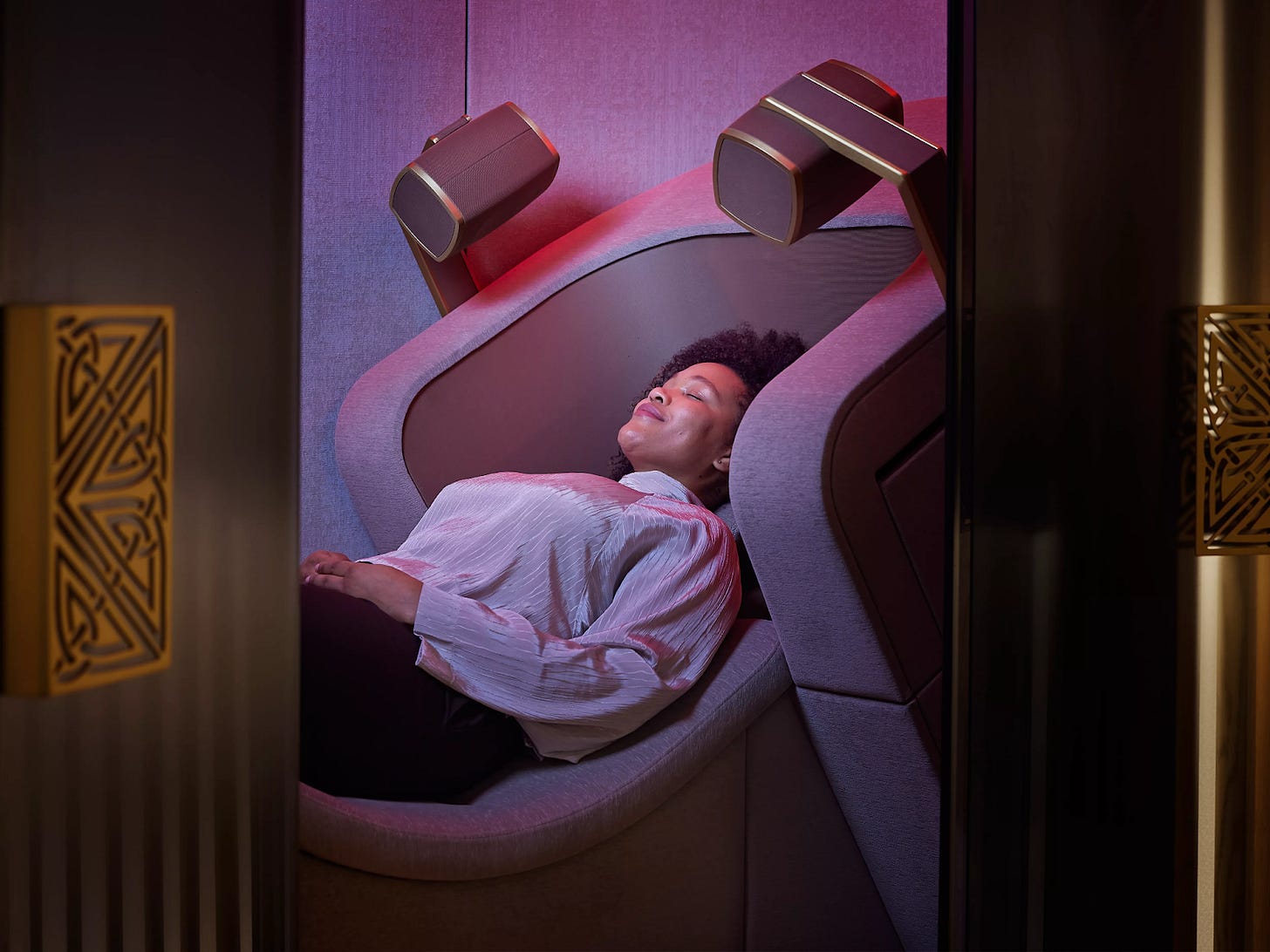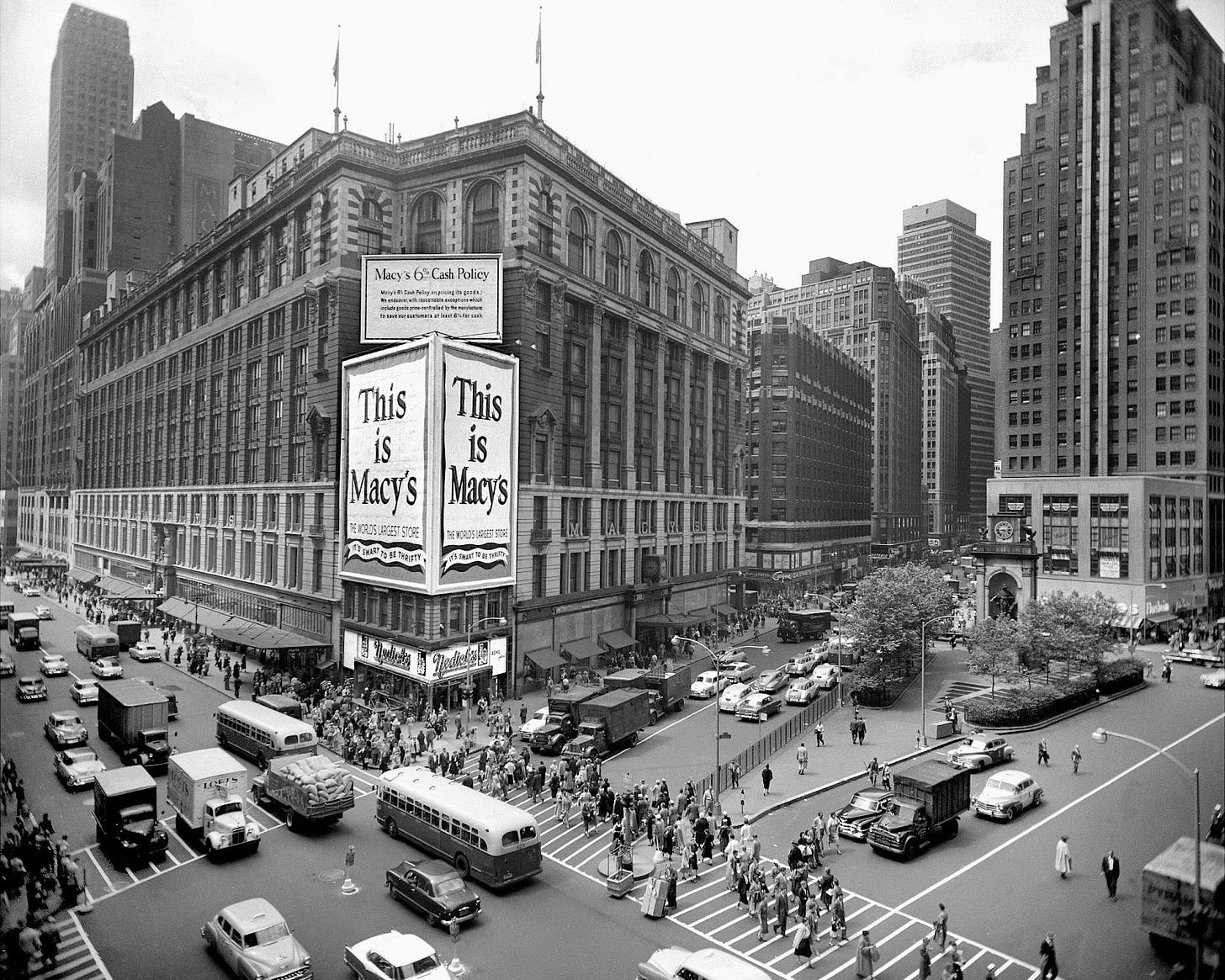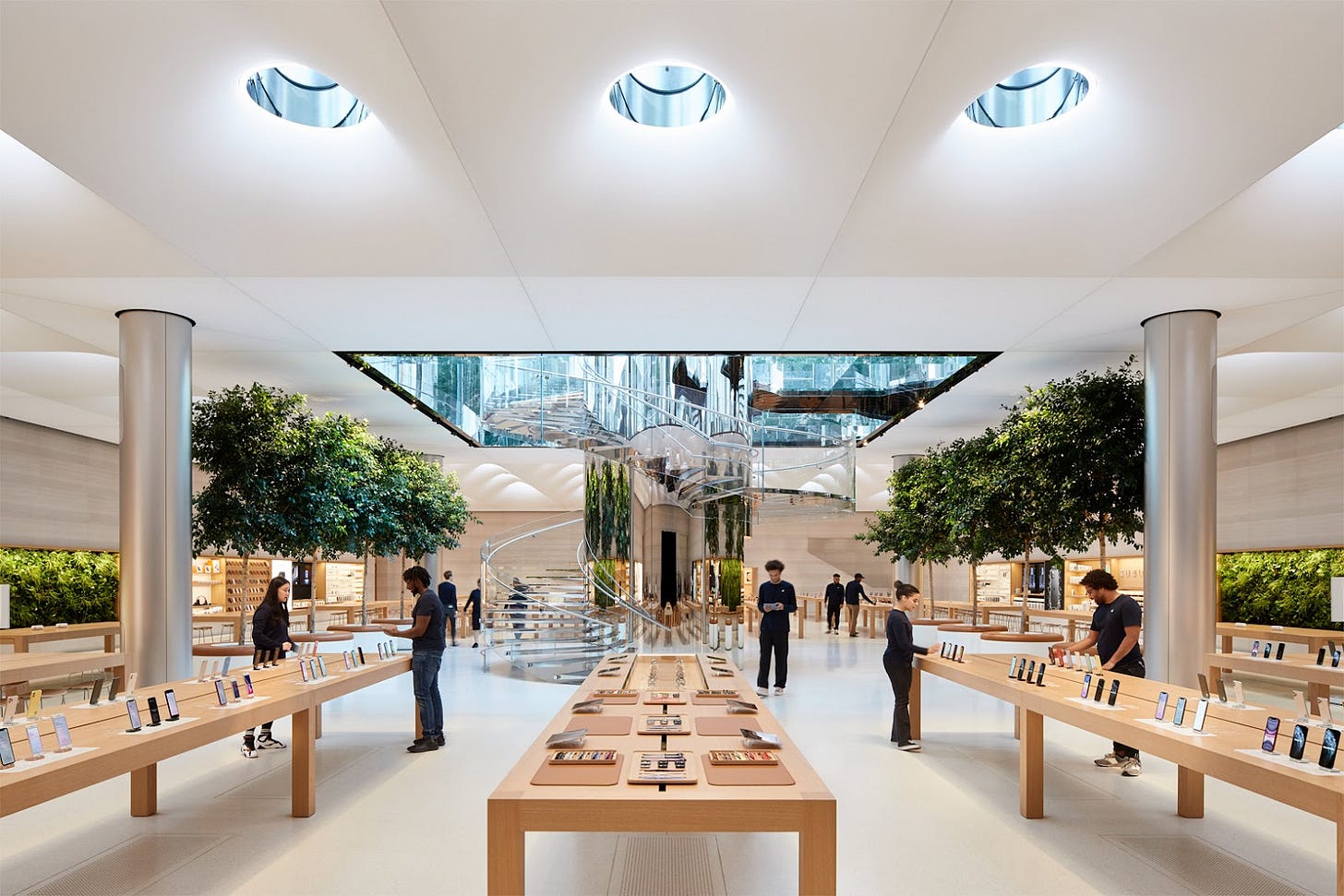Why Bother Walking into a Store?
From brain massages to yoga classes—the new wave of flagship stores and experiential retail.
Previously on Giuseppe’s Glimpse: In the last episode, we looked into how brand loyalty goes beyond points and perks, thriving on emotional connections, community, and shared values. Missed it? Catch up here! ✨
Buongiorno everyone! 👋
Retail used to be pretty straightforward: you’d walk into a store, buy what you needed, and leave. 🚶♂️ No frills, no fuss—just a simple transaction driven by necessity and convenience.
But in today’s digital-first world, where you can order socks, sushi, and a sofa without leaving your couch, why would anyone still bother visiting a physical store?
The answer: not just to shop, but to experience. ✨
During a recent trip to Amsterdam, I stepped into two flagship stores that perfectly demonstrate what modern retail spaces are evolving into.
At House of Rituals, I experienced something you would never expect in a store: a brain massage. Yes, a brain massage! 🧠💆♂️ It’s a multisensory experience using vibrations, sound, and guided breathing to induce deep relaxation—transforming the store into a wellness retreat.
Meanwhile, NIO, the electric car brand, also has its House that goes way beyond just showcasing cars—it’s a sleek lounge, co-working space, and event hub where customers feel part of an exclusive community. When I was there, they were even hosting a yoga class! 🧘♂️
What do these stores have in common? They’re not about aggressive sales tactics 🚫📢—they’re immersive spaces that tell a story, creating experiences that make you want to stick around.
The evolution of retail spaces
To understand how we got here, let’s take a quick look back.
In the early days of modern retail, department stores like Selfridges and Macy’s revolutionized shopping by creating grand spaces where consumers could browse a wide array of products under one roof. 🛍️
The focus was on abundance and accessibility.
As malls became the epicenter of suburban life in the mid-20th century, shopping evolved into a social activity, with food courts and entertainment options enhancing the experience. 👫🍔
Fast forward to the rise of e-commerce in the 2000s, and the role of physical stores faced a crisis.
The convenience of online shopping threatened traditional retail, pushing brands to rethink the purpose of their brick-and-mortar locations. 🤔
This led to the birth of experiential retail—spaces designed not just to sell, but to tell stories, evoke emotions, and create memorable interactions.
One key element 🔑 of this shift is atmospherics—the sensory elements like lighting, music, scent, and design that influence customer behavior.
Think about how the warm lighting and calming scents in a luxury boutique make you feel relaxed and indulgent, or how the dynamic displays and upbeat music in an activewear store energize you. 💪
These cues enhance the mood and align with the brand’s identity, making the shopping experience more engaging and memorable.
Today, stores are less about inventory and more about immersion, where customers connect with the brand’s values and lifestyle. ✨
Where brands come to life (literally)
The flagship store is no longer just a showroom—it’s a physical manifestation of a brand’s identity.
It’s where companies can tell their story, engage customers in memorable ways, and foster brand loyalty in ways that digital channels simply cannot replicate. 🤝
Luxury brands have understood this for years.
Apple, for example, has turned its glass-walled stores into hubs of creativity, hosting workshops and community events. Similarly, Nike’s House of Innovation allows you to customize sneakers on the spot—it's not just shopping; it's an event. A story you can wear on your feet. 👣
And technology has enhanced this evolution.
With AI-driven personalization, brands can create experiences tailored to individual preferences. Augmented reality (AR) and virtual reality (VR) further blur the lines between physical and digital, offering immersive, futuristic interactions. 🤖
Imagine walking into a store where an interactive display recommends products based on past purchases or visualizing how a piece of furniture fits into your home.
Once again, we see how technology isn’t replacing the human touch; it’s enhancing it, creating seamless and engaging experiences that feel both personal and futuristic. 💫
Connection vs. convenience
So, what does the future hold for physical stores?
In an era where online shopping reigns supreme, they have to reinvent themselves. 🔄
They’re no longer competing on convenience, but on connection.
These spaces have to surprise, delight, and offer something you can’t get from a website—the thrill of discovery, the joy of interaction, and yes, even the occasional brain massage. 🧠💆♂️
So next time you find yourself wandering into a store, ask yourself: am I here to shop, or am I here to feel something? Chances are, it’s both.
Curious to hear your thoughts—what’s the most unexpected experience you’ve had in a store?
Stay curious! 🙌
-gs
Oh, wow! You made it to the end. Click here to 👉 SHARE this issue with a friend if you found it valuable.







This article is fu"ckin shit and say gex
Love this one! Inspiring!